Persona 4 Golden: “Welcome to Inaba!”
Persona 4 Golden is a game that has a lot of complex systems that can take a great deal of time to learn and use functionally. In this article, we make your stay in Inaba even better by giving you an introduction to many of the game's mechanics, so you ca
Persona 4 Golden is a game so packed full of content that it’ll be damn near impossible for you to NOT find something to enjoy about it. But it is also a game that has a lot of complex systems that can take a great deal of time to learn and use functionally. That’s why I’m here: to make your stay in Inaba even better by giving you an introduction to many of the game’s mechanics, so you can dive right in and start slaying Shadows with reckless abandon.
The masks we wear

Let’s start with the game’s namesake: Personas. Personas are a reflection of the individuals that play host to them, but they are also bad-ass fighting machines. They come in the form of beasts and creatures from across a myriad of mythologies and religions and they are your most powerful tool for fighting the strange creatures known as Shadows, which live inside the world of the television. The main character can use multiple Personas, leaving you with a wide range of skills and abilities necessary for defeating the Shadows.
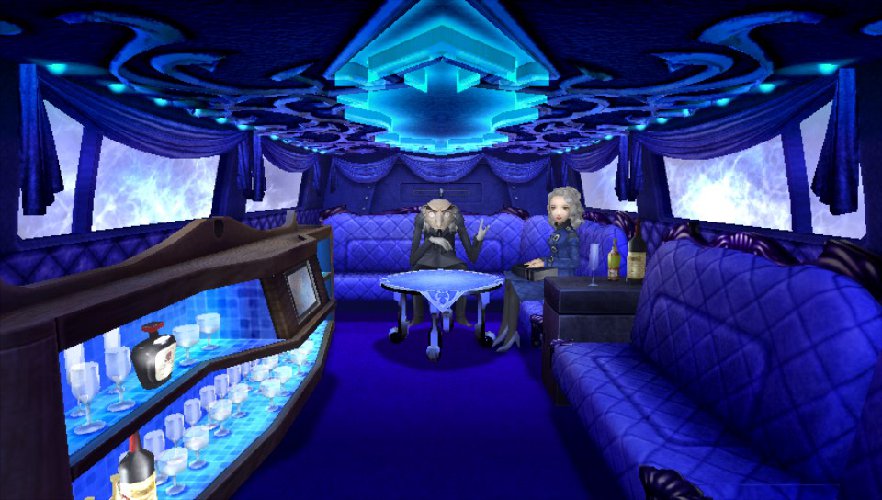
They are found inside the different dungeons of Persona 4 and also created by Fusing two or more Personas together in the Velvet Room; a place specifically devoted to helping you create the best and most brutal Personas. While a Persona can gain Experience Points (or EXP) the same way as your party members do, the EXP requirements are often so great that your Personas will quickly fall behind the current level of the Hero of the game, which is bad news, because the Hero receives all of his stats, strengths and weaknesses from the Persona he has equipped. That means that if your Persona is level 10, then the Hero is effectively level 10.
High school is just a popularity contest
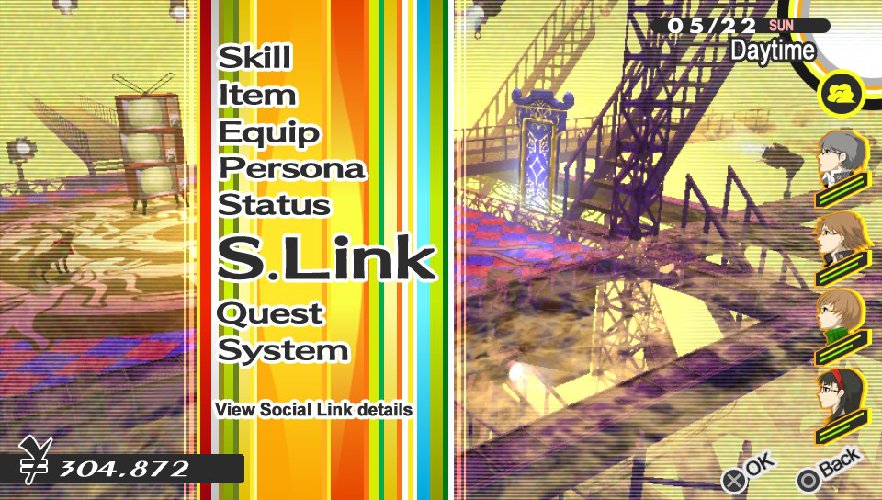
Let’s pause for a moment: We can’t effectively continue talking about Personas without discussing Social Links first. Managing your Social Links is probably the biggest and most complex activity you’ll commit to in Golden. They increase the strength of your Personas during your Fusion attempts and allow you to create even more powerful Personas that will undoubtedly give you the edge in battle.
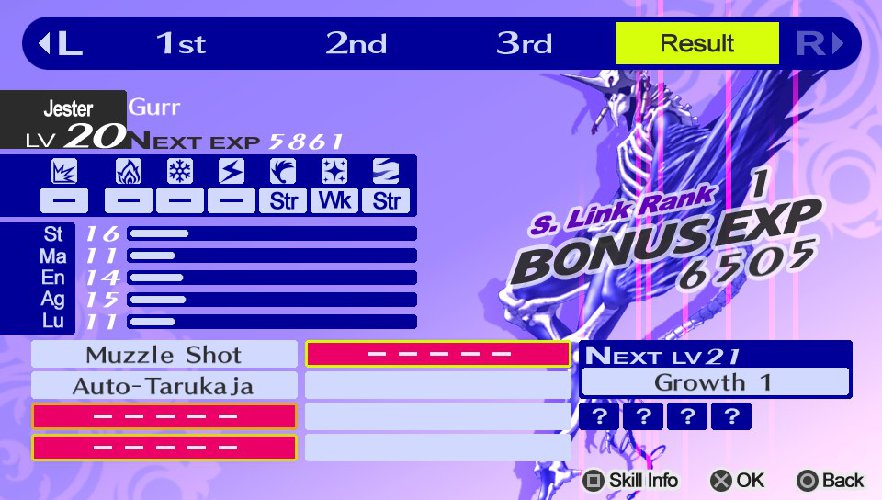
Social Links are the relationships you establish with others while at school, work, with your family and with your other party members. Each Social Link reflects a different, specific Arcana (Like tarot cards; the tower, the lovers, temperance, the fool, death, etc…), as does each Persona you encounter. Building a stronger relationship with a Social Link that has the Chariot Arcana will make your Chariot Personas stronger and unlock new, stronger Personas of the Chariot Arcana for you to create through Fusion. Make developing your Social Links your priority over just about everything else in order to succeed in Golden. Just remember: the stronger your Social Links, the more powerful your Personas, the easier you’ll be able to trounce any and all opponents who get in your way.
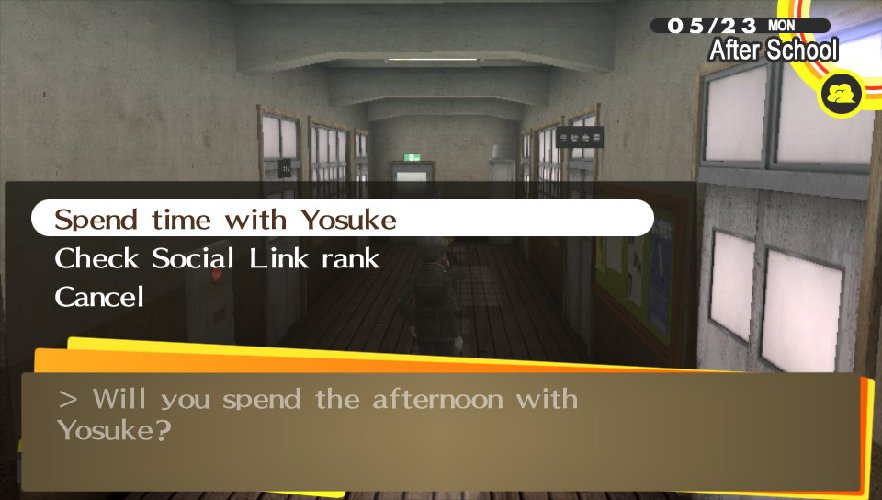
Most days, after school, you’ll be given opportunities to spend time with different Social Links, allowing you the opportunity to level-up that individual Social Link. Each Social Link can be leveled-up to 10, at which point they are maxed out, rewarding you with the ability to create an incredibly powerful Persona; you will also no longer have to spend time with that specific S-Link, freeing you to make time for one of Golden’s several other Social Links and activities. Working on your Social Links is probably the single-most important activity in the game, as your the Personas you create will be pretty worthless without a Social Link of the same Arcana.
Fuse or lose

If managing Social Links is the biggest part of the game, Fusion is its baby brother. Fusion is the act of combining two or more Personas to create a new, more powerful Persona. You will Fuse A LOT in this game, so get used to it. I won’t worry about breaking down the main mechanics of Fusion here, since the game will walk you through it step-by-step. I will, however, give you a brief overview of how Fusion works and how to get the most out of it.
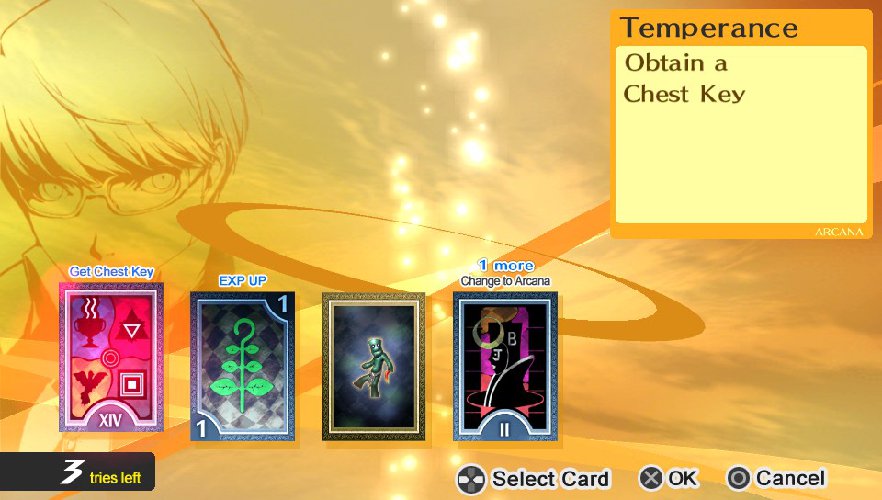
Most of the Personas you’ll get will be found on Shuffle Time cards at the end of battles with Shadows. The cards will appear and several Personas will be on the front of them, along with some other rewards. After a while, you will either level-up beyond the levels of your Personas or all of your slots for holding Personas will be full—often times both will be true. It’s at this time that you should head to the Velvet Room and start Fusing them together to create another Persona and make some space for new Personas. And don’t worry: the game will explain the Velvet Room in greater detail.
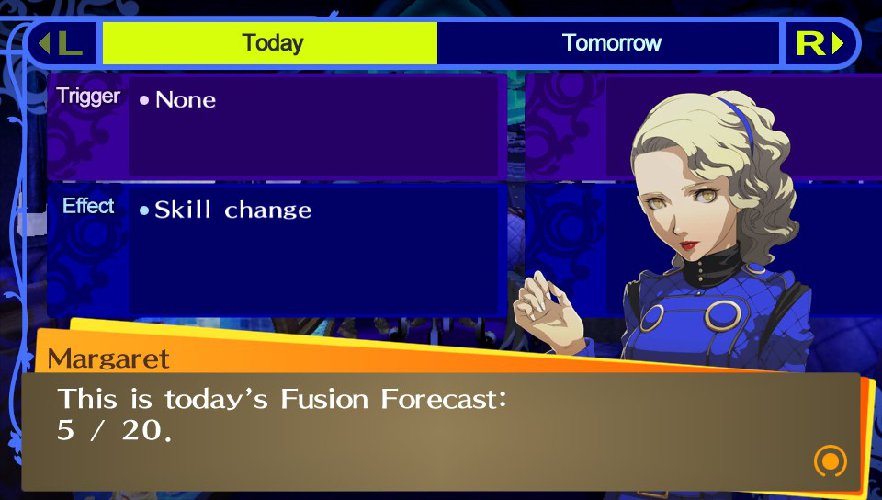
The Velvet Room will have what are called ‘Fusion Forecasts’ that tell you of bonuses that you’ll receive if you Fuse Personas on specific days. Use this feature wisely and your newly-Fused Personas will receive even greater power on top of the Social Link bonuses you’ll undoubtedly receive.
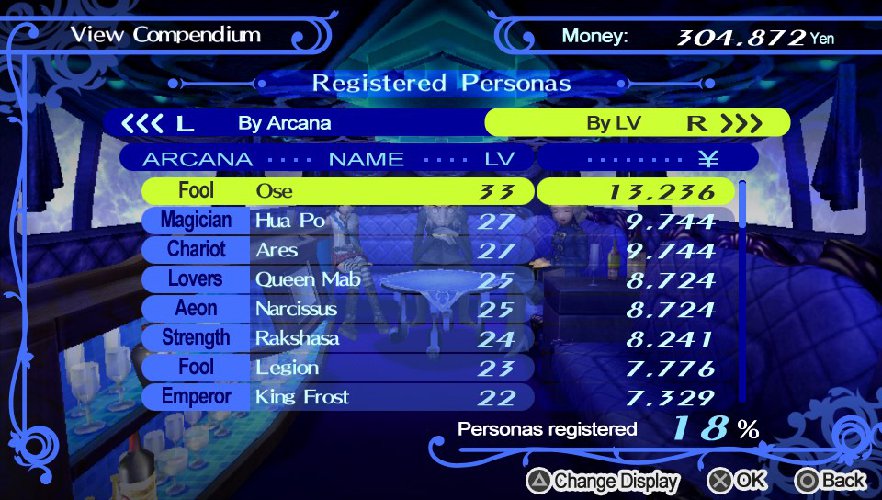
If you find that you can create a particularly incredible Persona, but it will require you to Fuse one of your favorites, worry not: You can always go to the Compendium in the Velvet Room and re-summon any of the Personas you have found from defeating Shadows or have created through Fusion, for a price.
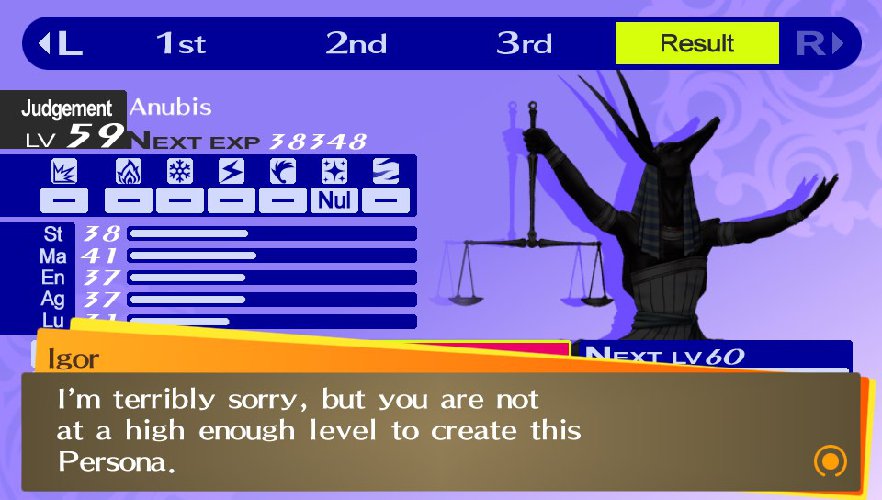
Now let’s get back to discussing party levels. You might be wondering what the point of leveling is in Persona 4 Golden if the Hero’s levels don’t do that much for you. The reason is you can only create Personas at a level that is no higher than the Hero’s. That means that if the Hero’s level is 20, he can only create Personas of 20 or lower. Raising the level of your Social Links will allow you to level-up your Personas beyond that level whenever you create a new Persona, but the Persona’s base level must be no higher than 20. Confused yet? Yeah, me too. A good example is when you create a new Persona through Fusion, the Hero’s level is 15, so you create a Persona of the same level, but because you have worked on a Social Link that the Persona falls under, when the Fusion is complete, the Persona in question will receive a level boost—sometimes up to five levels—pushing it from a 15 to a 16 or possibly higher. And since the main character gets all of his stats from the Persona he currently has equipped, he now has the ability to surpass his own current level; at least when it comes to stats.
Be all that you can be
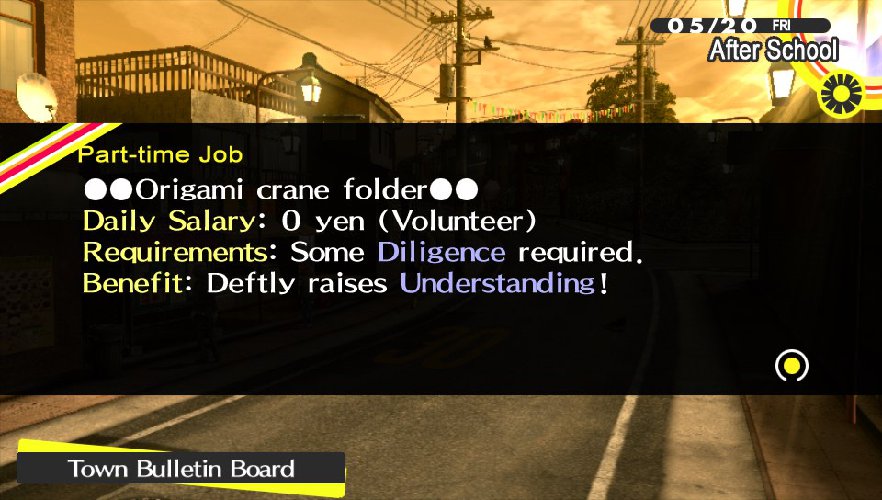
The process of getting Social Links isn’t about simply walking up to another person and staring at them until they become your friend, t’s about being smart, charismatic and smooth. That’s where Personality Stats come into play. On top of having combat stats for how much damage you can take and do in battle (among other stats), P4G features Personality Stats that dictate what you can say to others during conversation, whether or not someone will be interested in befriending you and will also determine whether or not you are able to complete some activities or start working at certain jobs.
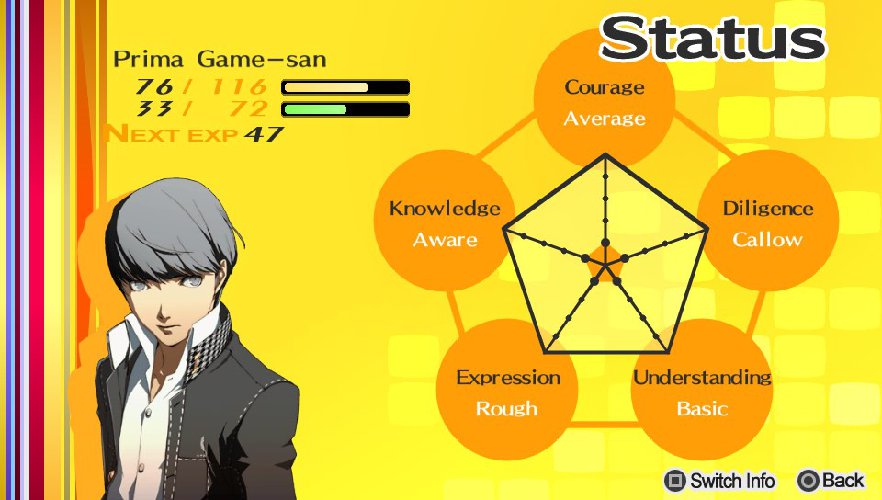
There are five total Personality Stats: Courage, which is raised by doing something brave, such as eating strange and questionable foods from the refrigerator in your home, or by saying something bold to one of your Social Links. Diligence, which is raised by doing work of a more mundane nature, such as creating envelopes as a part-time job in your bedroom. Understanding, which you learn from thinking of your party members and friends over yourself. Asking if a friend is okay during a conversation is often a good way to build Understanding. Expression, which can be raised from activities like practicing at Drama Club. And the last stat is Knowledge, which can be raised by answering questions correctly during class and studying at the library or the desk in your bedroom.
Raising these stats is very important and opportunities to improve your Personality should not be missed. Without high levels of each of these stats, a ton of options will be closed off to you, including getting new Social Links. Since the arguably biggest mechanic in the game is the Social Link mechanic, missing out on the chance to start a new one is never a good thing.
A moment of your time please

Now that we’ve established how the more robust systems work, it’s important for you to understand how Persona 4 Golden’s time mechanic works. The game takes place over the course of a year and each day you are given a variety activities to commit to, including jobs to work for money, stat gain and to even meet new people for new Social Links; people to spend time with to increase your Social Link levels; and time spent roaming around in the world of the television, fighting monsters, getting new Personas and hunting down items for side quests.
Here’s how a typical day is broken down:
Early Morning/School
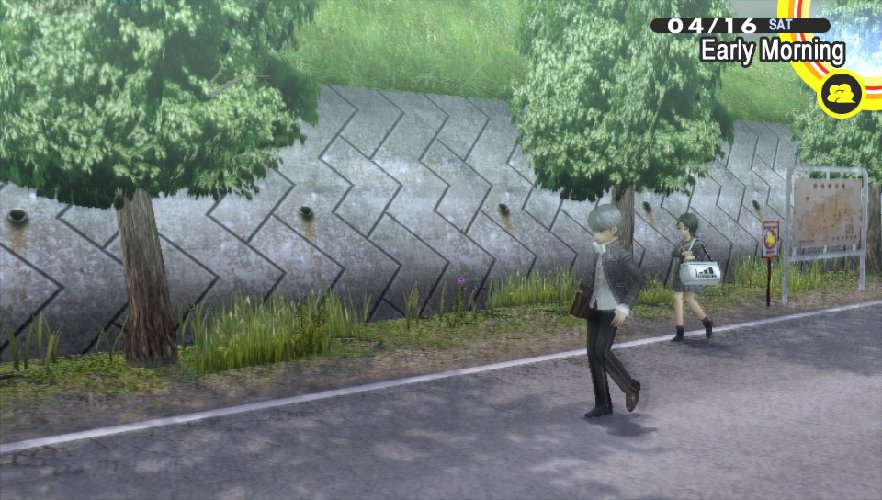
This is the time you go to school everyday. You’ll attend your classes wherein you will often be quizzed. If you answer quiz questions correctly, you’ll receive a Personality Stat increase. At school, you’ll also have the opportunity to spend lunchtime with friends in order to give yourself chance at increasing their Social Link level. There is no school on holidays, Sundays and during Summer Vacation, so mornings will be spent in your house during that time and opportunities to do some shopping via the Home Shopping Network will be presented. On days without school, as soon as you leave the house, your morning is over and upon returning home you’ll enter the Evening phase,
After School/Daytime
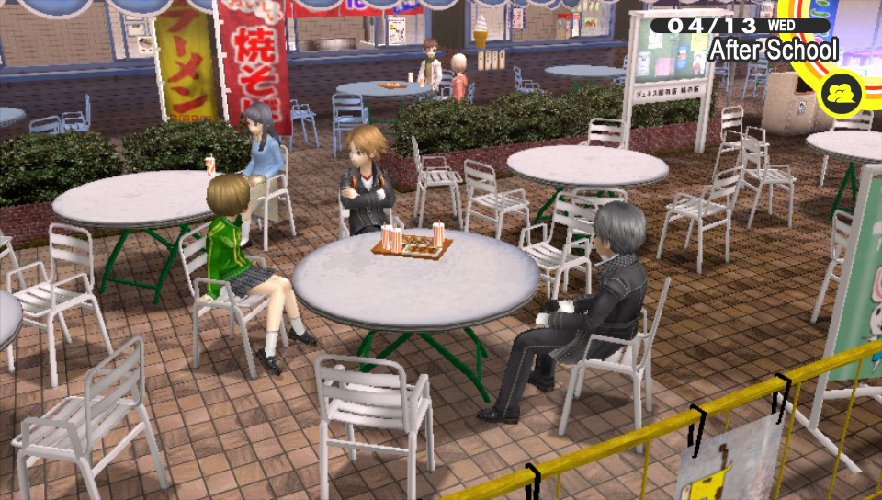
As the name implies, this is the time after school or after you leave your house on a school-less day and it makes for the time where you can explore the majority of what Persona 4 Golden has to offer. During this time you’ll be able to spend time with any available friends, go to work, or head into the TV to explore, fight shadows to level-up your party and track down items for side quests. Just about any of these actions will send you straight to Evening as soon as you’re done with them—the exception being exploration of the TV; once you go into the TV and come out again your day is often officially over.
Evening
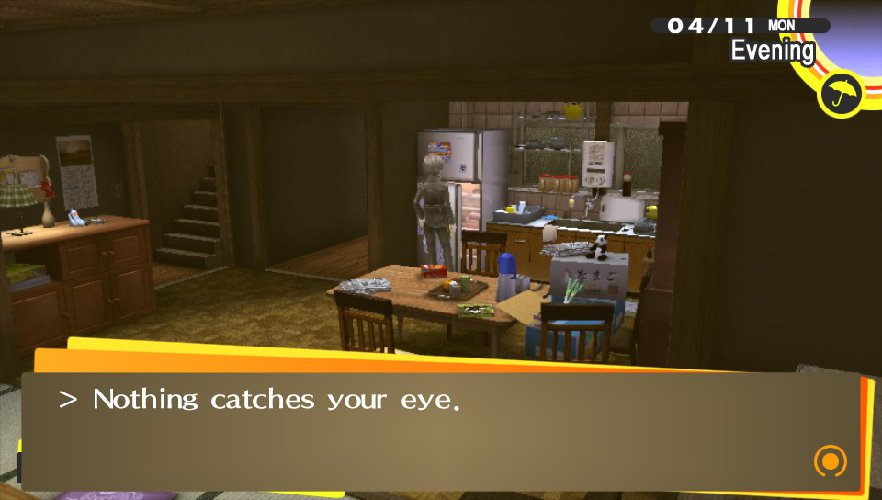
There isn’t a ton of things to do at night except for cook some food to share for lunch the next day, study or do some small jobs in your room for Personality Stat gain and a little bit of cash. You can also read at nights—or on days you don’t have school—for more Personality gain and there is a job you can work outside of the house on specific nights of the week that will introduce a new Social Link possibility. As stated before, if you head into the TV, you won’t get an Evening time and will instead be transferred to the Morning/School cycle of the next day.
Good as gold
While everything described above may sound completely overwhelming, P4G is quite forgiving for those who just want to explore and who have no interest in 100% completion on their first playthrough. Experiment with the different mechanics, explore the city of Inaba and enjoy the story, characters and gameplay of Persona 4. I promise you won’t be disappointed with what you find.
